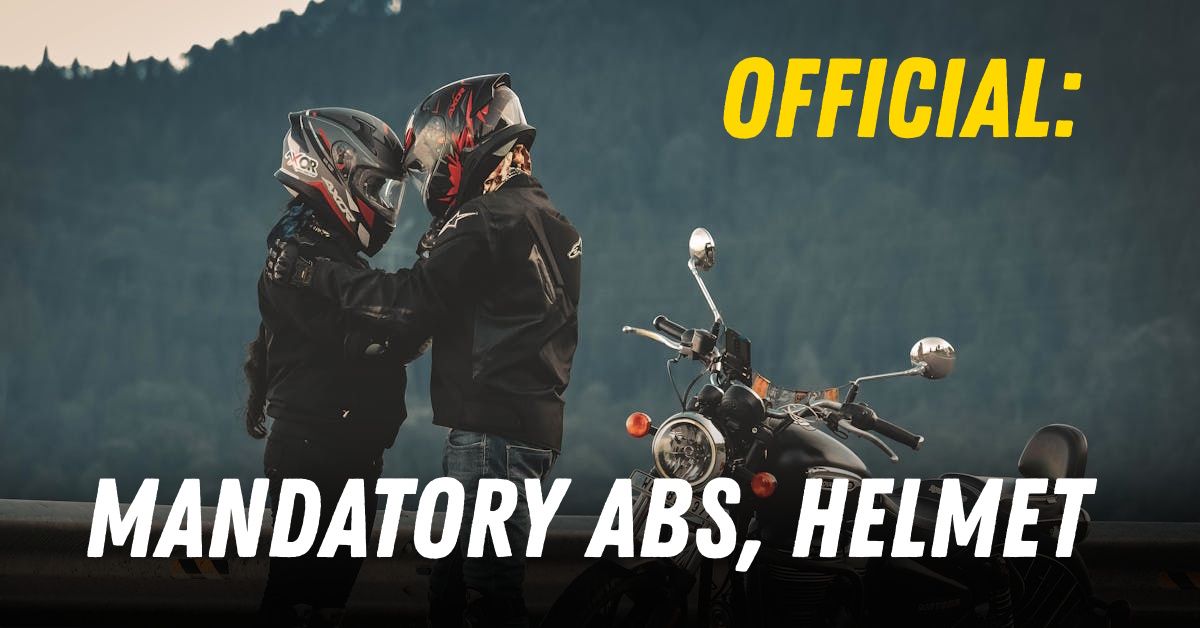ABS Mandatory For All 2 Wheelers From January 2026: Gadkari's Transport Ministry


The transport ministry has just dropped a bombshell that will reshape how every two-wheeler rolls off the production line. Starting January next year, every new scooter, motorcycle, and bike manufactured in the country must come equipped with anti-lock braking systems, regardless of engine size. But that's not all. Dealers will now be required to hand over two BIS-certified helmets with every single two-wheeler sale, ensuring both rider and pillion passenger have proper head protection from day one.
This sweeping change marks a dramatic shift from the current regulations where ABS was only mandatory for bikes above 125cc. Now, even the humble 100cc commuter scooter that millions rely on for their daily journey will need this life-saving technology. The dual helmet requirement addresses a glaring gap where pillion riders, particularly vulnerable in crashes, often went without proper protection.
The statistics that drove this decision paint a sobering picture of road safety. Over 69,000 people die annually in two-wheeler accidents across the country, with approximately half of these deaths attributed to riders not wearing helmets. Two-wheelers account for a staggering 44 percent of all road accidents and related fatalities, despite being just one category of vehicle. In 2021 alone, there were 69,240 deaths involving two-wheelers out of 155,622 total road accident fatalities.
The human cost becomes even starker when broken down by age groups. The worst affected demographic is the 18 to 45 age bracket, which accounts for about 67 percent of total accident deaths. These aren't just statistics on a government report. They represent young professionals, students, breadwinners, and family members whose lives could potentially be saved with better safety measures.
Anti-lock braking systems might sound like complex engineering, but the concept is refreshingly simple. When you slam the brakes hard, traditional brakes can lock up the wheels, causing the bike to skid uncontrollably. ABS prevents this by rapidly pulsing the brakes, allowing the wheels to maintain grip with the road surface whilst still stopping the vehicle effectively.
On wet roads, loose gravel, or sudden emergency stops, this technology can mean the difference between a controlled stop and a potentially fatal slide.
Industry experts estimate that ABS typically adds between ₹10,000 to ₹15,000 to a motorcycle's price, whilst helmet costs will likely be absorbed into the overall vehicle pricing. For budget-conscious buyers purchasing entry-level bikes that cost around ₹50,000 to ₹60,000, this represents a significant percentage increase.
However, automotive publications have consistently argued that this cost is justified. The technology has already proven its worth on higher-displacement motorcycles, where riders frequently report increased confidence during emergency braking situations.
Making these technologies mandatory is one thing, but ensuring compliance presents its own hurdles. The Bureau of Indian Standards will need to certify every helmet that comes with new bikes, following the IS 4151:2015 standard for protective helmets. This certification process ensures helmets meet specific impact resistance, strap durability, and visibility requirements.
Helmet usage compliance has historically been problematic. Studies in cities like Bengaluru show that whilst 88 percent of riders wear some form of head protection, only 34 percent use helmets correctly. Many riders still opt for lightweight cap helmets that offer minimal protection, or fail to strap their helmets properly.
This regulatory change reflects a broader push towards systematic road safety improvements. The government's SAFE initiative aims to achieve a 70 percent reduction in accidents and fatalities per 10,000 vehicles. Two-wheelers, representing 74 percent of all registered vehicles in the country, are central to this ambitious target.
The mandatory ABS and helmet requirements represent just the beginning of what could be a comprehensive overhaul of vehicle safety standards. Already, there are discussions about extending these requirements to cover smaller engine capacities and potentially introducing additional safety features like combined braking systems for smaller displacement vehicles.
As dealerships prepare for these changes and manufacturers gear up their production lines, one thing becomes clear: the landscape of two-wheeler ownership is about to change fundamentally. Whether this transformation succeeds in its primary goal of saving lives will depend not just on the technology itself, but on how effectively it's implemented and accepted by millions of riders who depend on two-wheelers for their daily mobility.
Via TOI